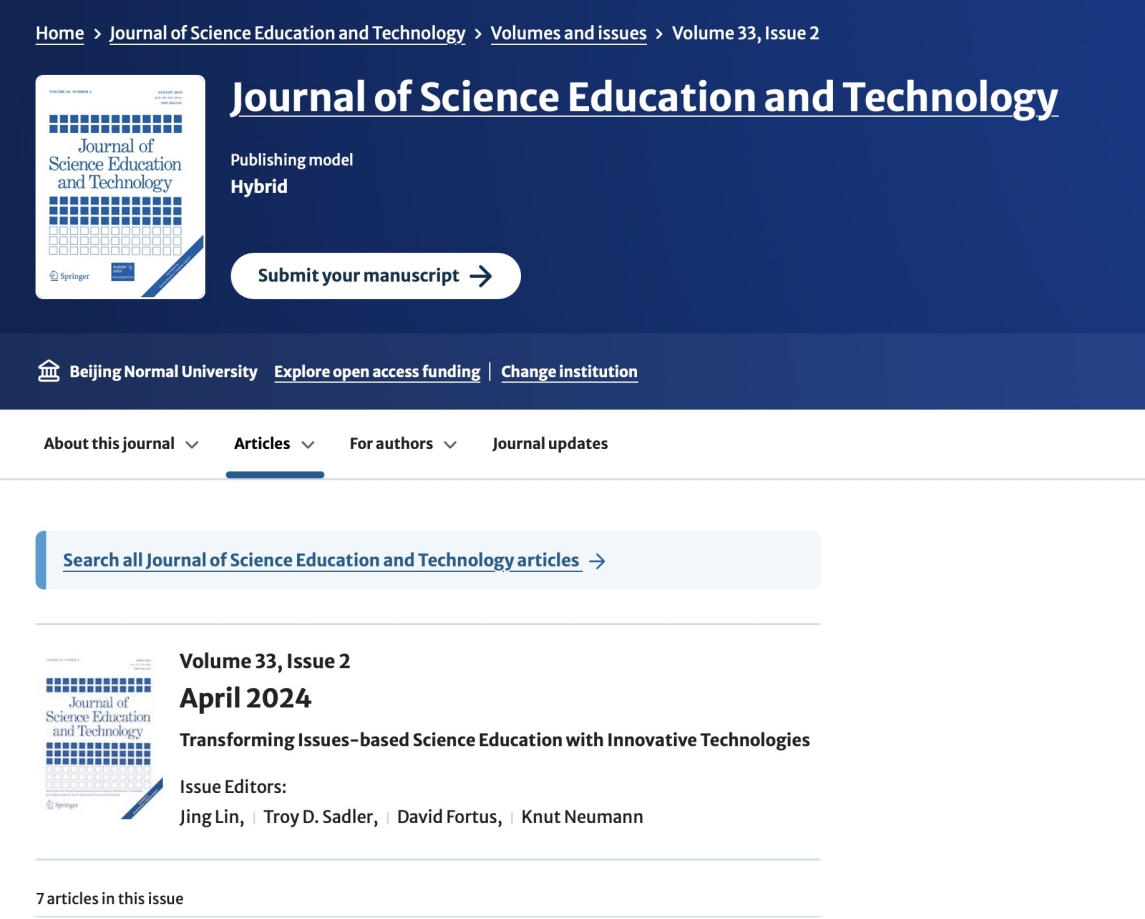由Jing Lin/林静、Troy D. Sadler、David Fortus、Knut Neumann联合客座主编的专刊《以技术创新赋能基于议题的科学教育/Transforming Issues-based Science Education with Innovative Technologies》,刊发于SSCI期刊《科学教育与技术/Journal of Science Education and Technology》2024年第33卷第2期。现汇总转载于此,供大家参考阅读。


[1]Lin, J., Neumann, K., Sadler, T. D.& Fortus, D. Transforming issues-based science education with innovative technologies. Journal of Science Education and Technology, 33(2), 157–160.
https://link.springer.com/article/10.1007/s10956-023-10086-5
[2]Sanei, H., Kahn, J. B., & Wang, C. (2024). Examining how students code with socioscientific data to tell stories about climate change. Journal of Science Education and Technology, 33(2), 161–177.
https://link.springer.com/article/10.1007/s10956-023-10054-z
[3]Mostasedo-Marazueque, S. J., Olsen, A., & Forbes, C. (2024). Supporting secondary students’ understanding of Earth’s climate system and global climate change using EzGCM: A cross-sectional study. Journal of Science Education and Technology, 33(2), 178–194.
https://link.springer.com/article/10.1007/s10956-023-10067-8
[4]Stuart, K. C., Gessel, D., & Forbes, C. (2024). Student outcomes of teaching about socioscientific issues in secondary science classrooms: Applications of EzGCM. Journal of Science Education and Technology, 33(2), 195–207.
https://link.springer.com/article/10.1007/s10956-023-10068-7
[5]Newton, M., Annetta, L. A., & Bresler, D. (2024). Using extended reality technology in traditional and place-based environments to study climate change. Journal of Science Education and Technology, 33(2), 208–227.
https://link.springer.com/article/10.1007/s10956-023-10057-w
[6]Covitt, B., Gunckel, C. L., & Moore, J. (2024). Employing a groundwater contamination learning experience to build proficiency in computational modeling for socioscientific literacy. Journal of Science Education and Technology, 33(2), 228–250.
https://link.springer.com/article/10.1007/s10956-023-10062-z
[7]Gans, N., Zohry, V., & Lombardi, D. (2024). Socio-scientific learning during the COVID-19 pandemic: Comparing in-person and virtual science learning using model-evidence link diagrams. Journal of Science Education and Technology, 33(2), 251–262.
https://link.springer.com/article/10.1007/s10956-023-10046-z
